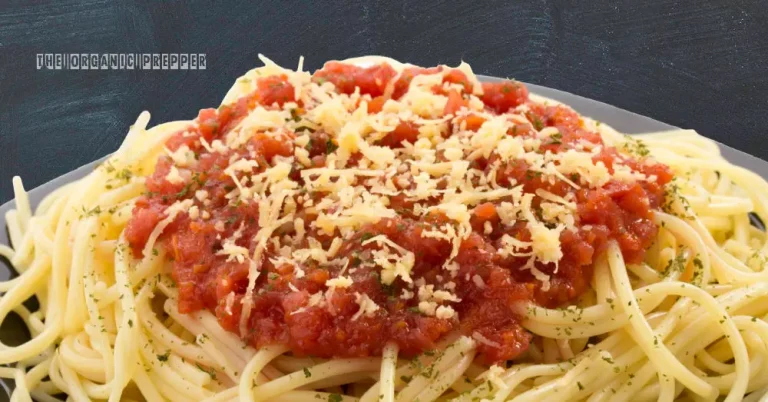Written by Bernie Carr
In recent years, inflation has caused grocery prices to rise sharply, putting pressure on households and making it harder to stick to a budget. For preppers, these rising costs can seem daunting, but it doesn’t have to mean abandoning preparedness goals. With the right strategies, you can still build an emergency stockpile and be prepared for potential disruptions without breaking the bank. This article explores practical ways to prep on a budget, focusing on affordable bulk items, DIY preservation techniques, and smart grocery shopping strategies.
1. Focus on Affordable Bulk Items
Bulk buying is a cornerstone of prepping, and even with rising prices, there are many affordable staples that can help you stretch your dollars further. When purchased in bulk, these items have a long shelf life and provide versatility in emergency situations. Here are some budget-friendly bulk staples to consider:
Rice
Rice is a prepper’s go-to food. It’s affordable, filling, and easy to store. Whether you prefer white rice (which has a longer shelf life) or brown rice (which is more nutritious but spoils faster), buying in bulk can significantly reduce costs. Rice can be the base for many meals, making it a key item for a budget-friendly stockpile.
Beans and Lentils
Dried beans and lentils are inexpensive, high in protein, and packed with essential nutrients. They can be stored for years if kept in a cool, dry place, and they’re easy to cook and versatile in meal preparation. You can buy them in large quantities, often for just a few dollars per pound, which can feed a family for days.
Pasta
Pasta is another long-lasting and versatile staple. You can buy it in bulk at a low price, and it provides a great base for various meals when combined with simple sauces or canned vegetables. Like rice, pasta can be stored for extended periods, making it a valuable addition to your prepper pantry.
Oats
Oats are cheap, nutritious, and easy to store. Whether you use them for breakfast, baking, or in homemade energy bars, oats provide a hearty option for long-term storage. You can often find bulk oats at warehouse stores or online, reducing the per-unit cost significantly.
Canned Goods
While canned goods tend to cost more per unit compared to dried goods, they are still an affordable way to build your food stockpile. Canned vegetables, fruits, meats, and soups are essential during emergencies because they don’t require refrigeration and have long shelf lives. Keep an eye out for sales or discounts on canned goods and stock up when prices are low.
Flour and Sugar
For those who bake, buying flour and sugar in bulk is a smart way to save money while ensuring you have the ingredients to make bread, desserts, and other essentials during a crisis. Both items can be stored long-term if kept in airtight containers.
2. DIY Preservation Techniques
Food preservation is a key skill for budget-conscious preppers. Learning how to preserve fresh food for later use can help you save money and extend the shelf life of perishables. Here are a few DIY preservation methods to consider:
Canning
Home canning is a great way to preserve seasonal fruits and vegetables that might otherwise spoil. With basic canning equipment, you can store jams, sauces, vegetables, and even meats for months or years. While the initial investment in canning supplies may seem high, it pays off in the long run by allowing you to preserve surplus produce. If you are interested in canning you must follow canning guidelines such as this one from the U.S. Department of Agriculture (USDA).
Dehydrating
Dehydrating is another budget-friendly way to preserve food. Dehydrators can be purchased for a reasonable price, or you can use your oven. Some air fryers also double as food dehydrators. Dehydrating reduces the moisture in fruits, vegetables, and meats, allowing them to be stored for long periods without refrigeration. Dehydrated foods are lightweight and easy to store, making them perfect for emergency kits.
Pickling and Fermenting
Pickling and fermenting are inexpensive ways to preserve vegetables while adding flavor and probiotics to your diet. You can pickle cucumbers, onions, carrots, and more using basic ingredients like vinegar, salt, and water. Fermented foods like sauerkraut and kimchi not only last for months but also offer health benefits through their probiotic content.
Freezing
Freezing is one of the simplest methods of food preservation, and it’s particularly useful for those with limited space. Purchase fresh fruits, vegetables, and meats when they are in season and freeze them for later use. If you have the budget for it, consider buying a small chest freezer to expand your freezing capacity. Just remember to have a backup plan, such as a generator, for power outages.
3. Smart Grocery Shopping Strategies
One of the most effective ways to prep on a budget is to become a smarter shopper. With a few tweaks to your grocery habits, you can maximize your savings and stockpile essentials at lower costs. Here’s how:
Use Coupons and Discount Apps
Coupons are a tried-and-true method for saving money on groceries. While paper coupons are still available, many stores now offer digital coupons and discount apps. Download these apps to your smartphone and look for deals on non-perishable items like canned goods, pasta, and other long-lasting products. Make a habit of checking for discounts before every shopping trip.
Shop at Discount Grocery Stores
Consider shopping at discount grocery chains like Aldi, Lidl, or warehouse stores like Costco and Sam’s Club. These stores often offer lower prices on bulk items, making them ideal for budget prepping. You can also explore dollar stores, where pantry staples and canned goods are often available at reduced prices.
Buy Seasonal and Local Produce
Fruits and vegetables are often cheaper when they are in season. Stock up on seasonal produce when prices are lower, and preserve them through freezing, canning, or dehydrating. Shopping at local farmers’ markets can also help you find fresh, affordable produce, and you can often get discounts by buying in bulk.
Plan Your Meals and Avoid Impulse Buying
Planning your meals around sales and what’s already in your pantry can help reduce waste and save money. Before heading to the grocery store, create a shopping list and stick to it. Avoid impulse purchases, which can quickly add up and eat into your prepping budget.
Buy Generic Brands
When possible, choose store-brand or generic products over name-brand items. In most cases, the quality is comparable, but the cost savings can be significant. Stocking up on generic canned goods, pasta, and rice can help you stretch your budget further.
Warehouse Clubs
Buy bulk items at a warehouse club; if the quantities are too large or expensive, split with a friend or relative and share the cost.
LDS Cannery
Home storage centers by the Church of Latter Day Saints (LDS) are also good sources of bulk items. I called the location in Spring, TX near Houston and was told you do not need to belong to the church to shop there. See if you have one in your area and call ahead for hours and other details.
Rotate Your Stockpile and Reduce Waste
An important aspect of prepping is ensuring that your stockpile remains fresh. Use the FIFO (First In, First Out) method to rotate your stockpile, meaning you consume the oldest items first and replace them with new ones. This reduces waste and ensures that nothing in your emergency pantry goes bad. By staying organized and mindful of expiration dates, you avoid having to throw away food, which saves you money in the long run.
Conclusion
Prepping on a budget is entirely possible, even in the face of rising grocery prices. By focusing on affordable bulk items, utilizing DIY preservation techniques, and practicing smart shopping strategies, you can build a solid emergency stockpile without straining your finances. Inflation may continue to impact food prices, but with these tips, you can prepare your household for emergencies while keeping costs under control.
Preparedness is about being resourceful, and with a little effort and planning, you can be well-prepared no matter the economic climate.
We are an affiliate of Amazon.com, which means we received a small commission if you click through one of our Amazon links when you shop, at totally no cost to you. This helps keep the lights on at the blog. Thanks!
About the author
Bernie Carr is the founder of Apartment Prepper. She has written several books including the best-selling Prepper’s Pocket Guide, Jake and Miller’s Big Adventure, The Penny-Pinching Prepper and How to Prepare for Most Emergencies on a $50 a Month Budget. Bernie’s latest e-book, FRUGAL DIY has just been released on Amazon. Her work appears in sites such as the Allstate Blog and Clark.com, as well as print magazines such as Backwoods Survival Guide and Prepper Survival Guide. She has been featured in national publications such as Fox Business and Popular Mechanics. Learn more about Bernie here.
FB: https://www.facebook.com/apartmentprepper
Instagram: https://www.instagram.com/apartmentpreppers/
Twitter: https://twitter.com/AptPrepper
YouTube: https://www.youtube.com/channel/UC7vOtdbo-wiBeBxD6puCr1Q
Patreon: https://patreon.com/apartmentprepper
Pinterest: https://www.pinterest.com/aptprepper/
Today’s societal climate not supportive of prepping. With your help, we can keep bringing you content that is often suppressed. Help keep Apartment Prepper alive.
Join me on Patreon for ad-free content.

Or Help out via Paypal
















